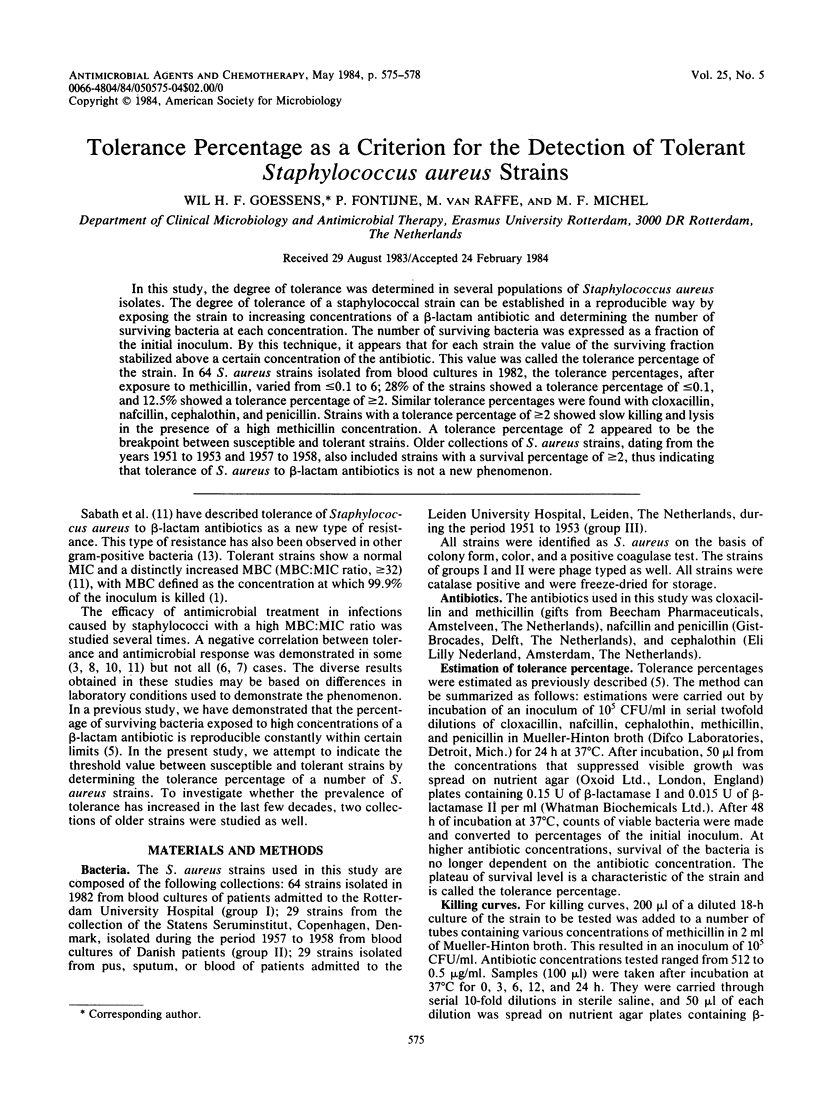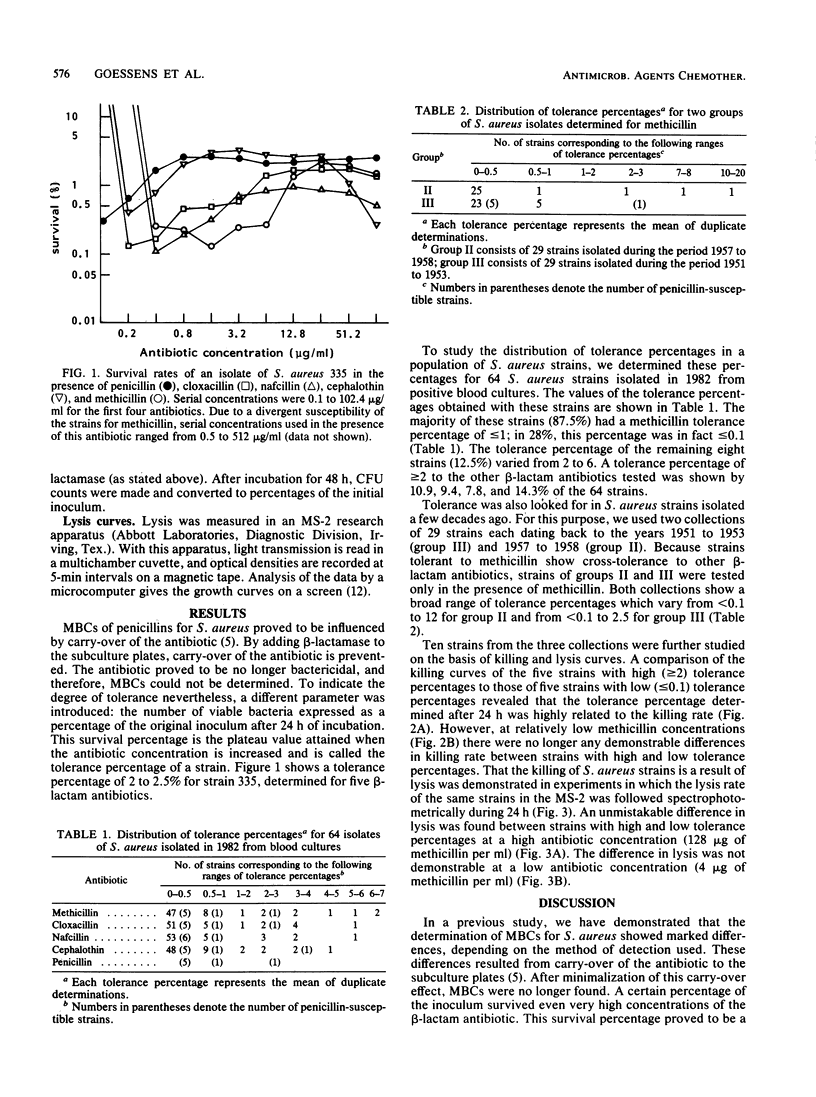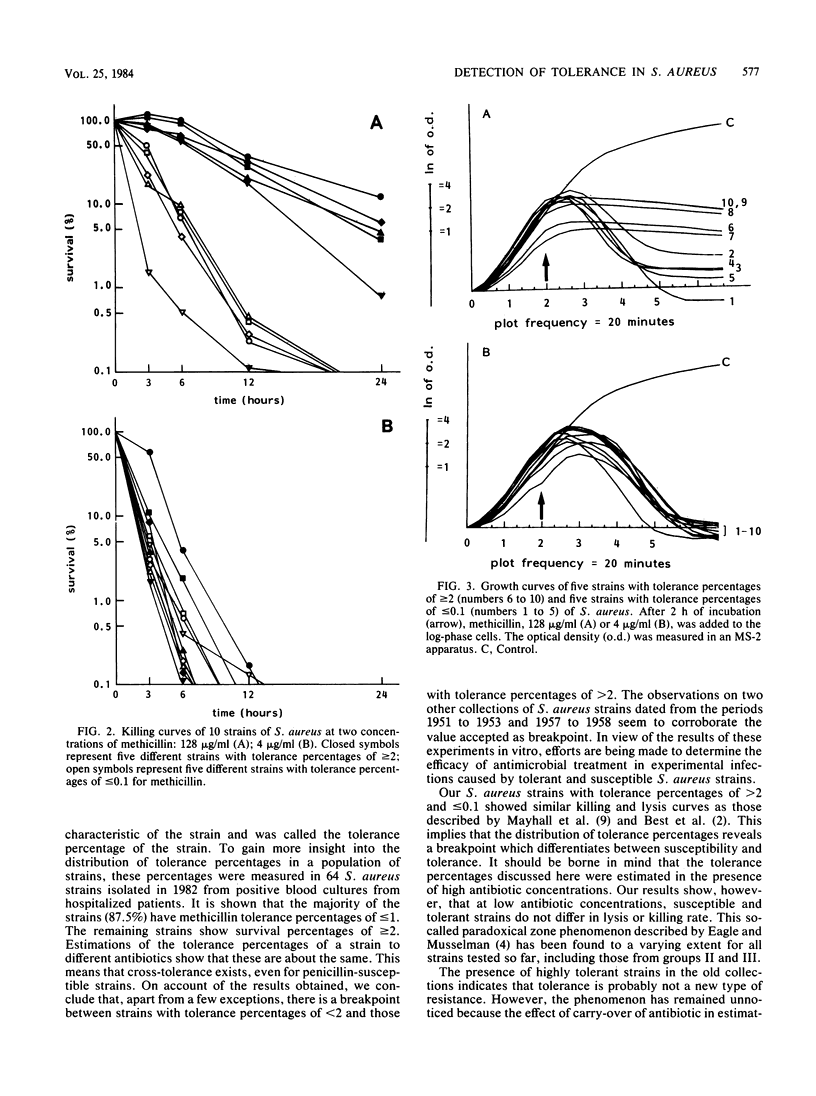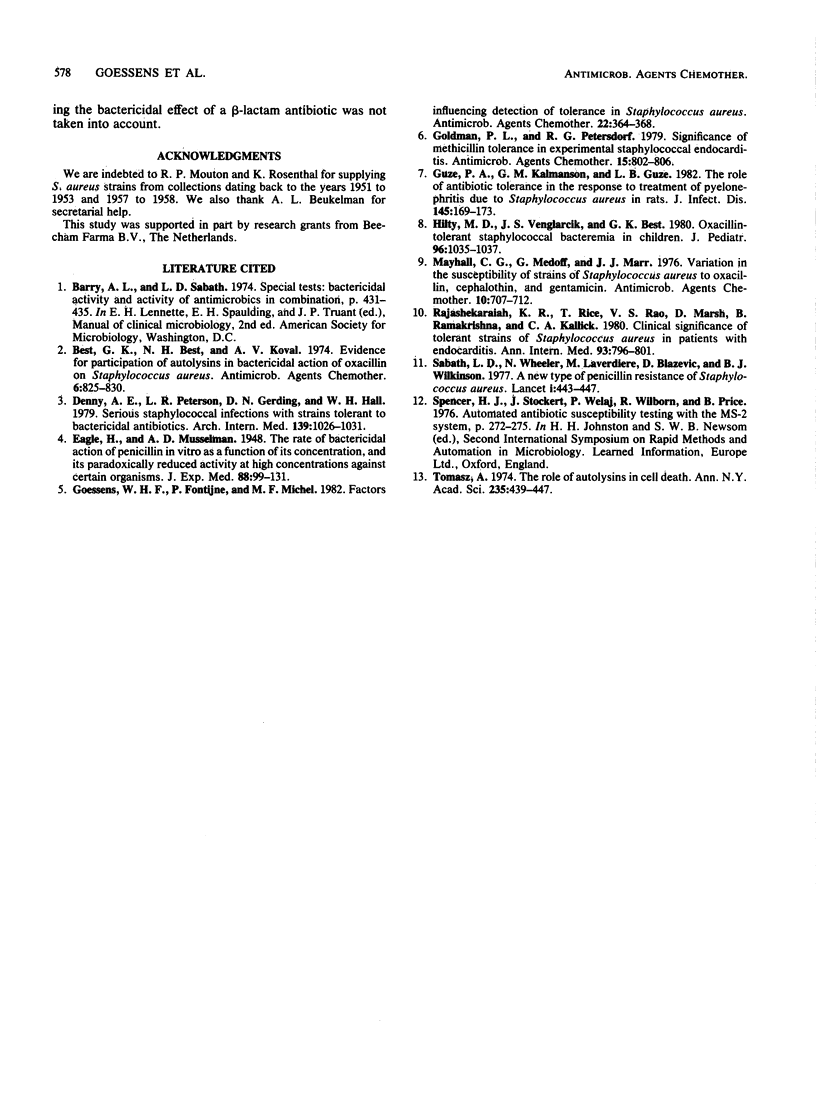Abstract
In this study, the degree of tolerance was determined in several populations of Staphylococcus aureus isolates. The degree of tolerance of a staphylococcal strain can be established in a reproducible way by exposing the strain to increasing concentrations of a beta-lactam antibiotic and determining the number of surviving bacteria at each concentration. The number of surviving bacteria was expressed as a fraction of the initial inoculum. By this technique, it appears that for each strain the value of the surviving fraction stabilized above a certain concentration of the antibiotic. This value was called the tolerance percentage of the strain. In 64 S. aureus strains isolated from blood cultures in 1982, the tolerance percentages, after exposure to methicillin, varied from less than or equal to 0.1 to 6; 28% of the strains showed a tolerance percentage of less than or equal to 0.1, and 12.5% showed a tolerance percentage of greater than or equal to 2. Similar tolerance percentages were found with cloxacillin, nafcillin, cephalothin, and penicillin. Strains with a tolerance percentage of greater than or equal to 2 showed slow killing and lysis in the presence of a high methicillin concentration. A tolerance percentage of 2 appeared to be the breakpoint between susceptible and tolerant strains. Older collections of S. aureus strains, dating from the years 1951 to 1953 and 1957 to 1958, also included strains with a survival percentage of greater than or equal to 2, thus indicating that tolerance of S. aureus to beta-lactam antibiotics is not a new phenomenon.
Full text
PDF



Selected References
These references are in PubMed. This may not be the complete list of references from this article.
- Best G. K., Best N. H., Koval A. V. Evidence for participation of autolysins in bactericidal action of oxacillin on Staphylococcus aureus. Antimicrob Agents Chemother. 1974 Dec;6(6):825–830. doi: 10.1128/aac.6.6.825. [DOI] [PMC free article] [PubMed] [Google Scholar]
- Denny A. E., Peterson L. R., Gerding D. N., Hall W. H. Serious staphylococcal infections with strains tolerant to bactericidal antibiotics. Arch Intern Med. 1979 Sep;139(9):1026–1031. [PubMed] [Google Scholar]
- Goessens W. H., Fontijne P., Michel M. F. Factors influencing detection of tolerance in Staphylococcus aureus. Antimicrob Agents Chemother. 1982 Sep;22(3):364–368. doi: 10.1128/aac.22.3.364. [DOI] [PMC free article] [PubMed] [Google Scholar]
- Goldman P. L., Petersdorf R. G. Significance of methicillin tolerance in experimental staphylococcal endocarditis. Antimicrob Agents Chemother. 1979 Jun;15(6):802–806. doi: 10.1128/aac.15.6.802. [DOI] [PMC free article] [PubMed] [Google Scholar]
- Guze P. A., Kalmanson G. M., Guze L. B. The role of antibiotic tolerance in the response to treatment of pyelonephritis due to Staphylococcus aureus in rats. J Infect Dis. 1982 Feb;145(2):169–173. doi: 10.1093/infdis/145.2.169. [DOI] [PubMed] [Google Scholar]
- Hilty M. D., Venglarcik J. S., Best G. K. Oxacillin-tolerant staphylococcal bacteremia in children. J Pediatr. 1980 Jun;96(6):1035–1037. doi: 10.1016/s0022-3476(80)80633-0. [DOI] [PubMed] [Google Scholar]
- Mayhall C. G., Medoff G., Marr J. J. Variation in the susceptibility of strains of Staphylococcus aureus to oxacillin, cephalothin, and gentamicin. Antimicrob Agents Chemother. 1976 Oct;10(4):707–712. doi: 10.1128/aac.10.4.707. [DOI] [PMC free article] [PubMed] [Google Scholar]
- Rajashekaraiah K. R., Rice T., Rao V. S., Marsh D., Ramakrishna B., Kallick C. A. Clinical significance of tolerant strains of Staphylococcus aureus in patients with endocarditis. Ann Intern Med. 1980 Dec;93(6):796–801. doi: 10.7326/0003-4819-93-6-796. [DOI] [PubMed] [Google Scholar]
- Sabath L. D., Wheeler N., Laverdiere M., Blazevic D., Wilkinson B. J. A new type of penicillin resistance of Staphylococcus aureus. Lancet. 1977 Feb 26;1(8009):443–447. doi: 10.1016/s0140-6736(77)91941-9. [DOI] [PubMed] [Google Scholar]


